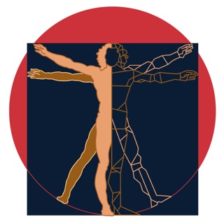The study on how humans of the past thinks as reflected on the material culture that they left behind is what Cognitive Archeology is all about. And although critics say that the field is highly speculative in nature, it cannot be denied that the material remains of past cultures gives us access to the thought processes of the people that made them. In order to achieve a thorough analysis, cognitive archeology utilizes and combines the theories and methods of other sciences in order to come up with a reasonable and somewhat logical conclusion in interpreting the thoughts processes of ancient cultures as reflected in their material culture. In this sense, Cognitive Archeology is a truly multi-disciplinary discipline.
The early beginnings of Cognitive Archeology can be traced to two papers written by South African Paleolithic Archeologist Ralph Holloway Jr. in 1969 and by Physical Anthropologist Isaac Glynn in 1976.
Both articles are regarded as that which started the beginnings of Cognitive Archeology as both were the only early works during those times that attempted to analyze the thought processes of pre-historic humans through the material culture that they left behind. In this sense their approach in interpreting the archeological record was different and unique as it emphasized the cognitive aspect in the interpretation of the archeological record.
In Ralph Holloway Jr.’s article entitled “Culture a Human domain”, he recognized that there are no works that dealt with how man organizes his experiences when he interacts with his environment. He attempts to provide archeologists with a theoretical framework by examining the tool making of pre-historic man in terms of psychological processes. Further in his paper he argues that both tool making and language possibly came out of the same cognitive structures by analyzing tool making using models for language behavior. He highlights in his paper that the linguistic skills of early man can be gauged to some extent by the complexity of his stools. He later concludes his paper by stating that although stone tools will not tell us precisely how early man organizes his experiences when he interacts with his environment, however it tells us that he possesses a cognitive structure necessary for language. Holloway no doubt laid the necessary foundation that prompted future archeologist to think that indeed access to the cognitive processes of earlier cultures can be made possible through a thorough investigation of archeological artifacts.
About seven years thereafter, Isaac Glynn came out with a paper entitled “Stages of Cultural elaboration in the Pleistocene: Possible Archeological indicators of the development of Language capabilities.” In this essay he explores the possible relationship between material culture and language through two approaches. First, by scrutinizing the archeological record and relating it to the language capabilities of man and secondly, by searching the archeological record for economic behavior and adaptive patterns and then considering the potential effects of the varying intensities of information exchange brought about these systems that could have possibly aided the evolution of language abilities.
Ralph Holloway Jr. provided the initial theoretical framework to Cognitive Archeology, however Isaac Glynn provided a more detailed and concrete analysis and the application of the cognitive archeology approach. Their works were unique at that time because during that period with the advent of the New Archeology, the prevailing emphasis was mostly on taxonomy and ecology. It was also during these times when cognitive anthropology was taking hold in the United States. These particular works by Holloway and Glynn’s no doubt provided a strong base support for the beginnings of the unique multi-disciplinary emerging field of cognitive archeology.
The entire discipline of Cognitive archeology generally rest on an evolutionary framework. As somebody who leans in favour of intelligent design, I might have my personal reservations with regards to the evolutionary framework that is pervasive in almost all science dealing with origins. It is however my intention to explore these framework and theories that arises from them in great detail in order to understand them properly and in order to counter, supplement or complement my personal leanings.
 Hi ! my name is Zigfred Diaz. Thanks for visiting my personal blog ! Never miss a post from this blog. Subscribe to my full feeds for free. Click here to subscribe to zdiaz.com by Email
Hi ! my name is Zigfred Diaz. Thanks for visiting my personal blog ! Never miss a post from this blog. Subscribe to my full feeds for free. Click here to subscribe to zdiaz.com by Email
You may also want to visit my other blogs. Click here to learn more about great travel ideas.

Leave a Reply